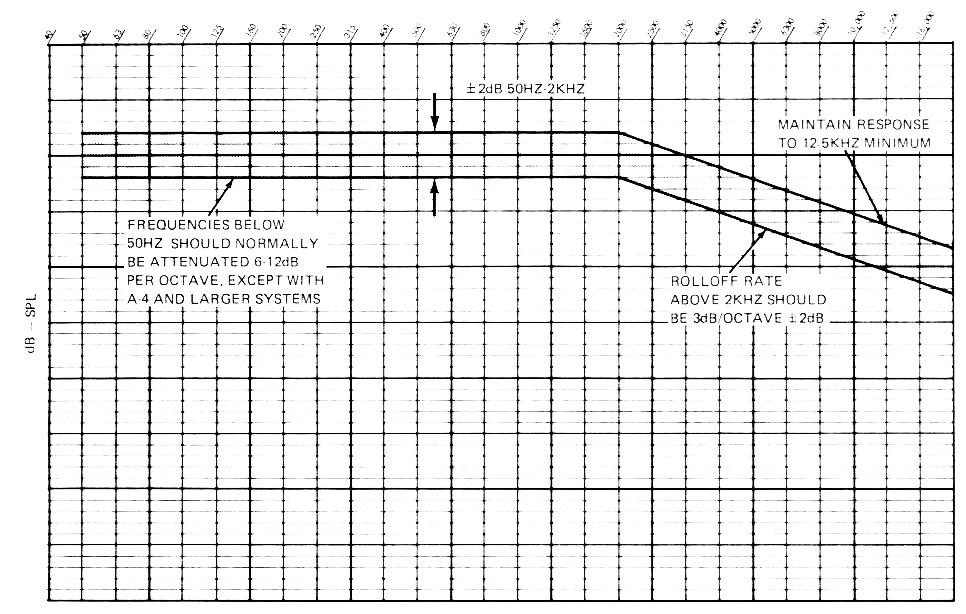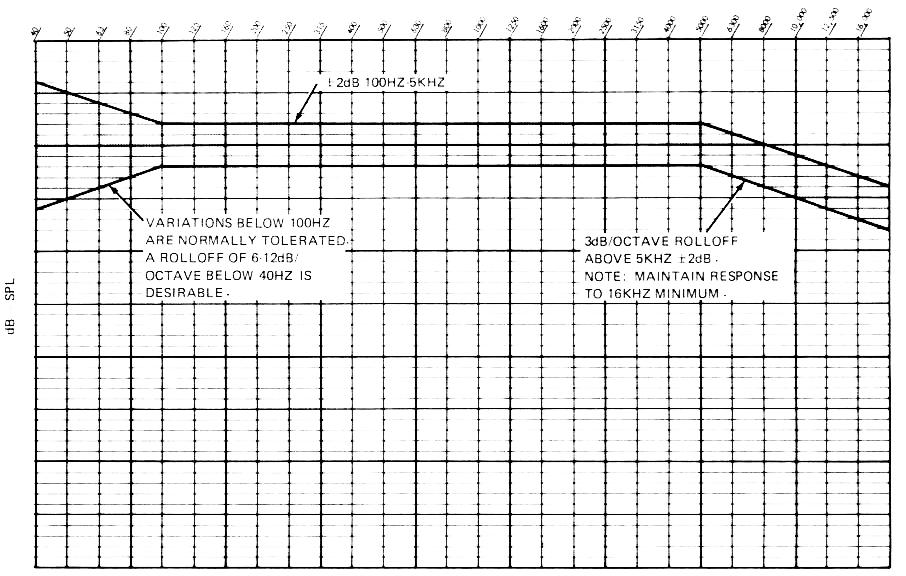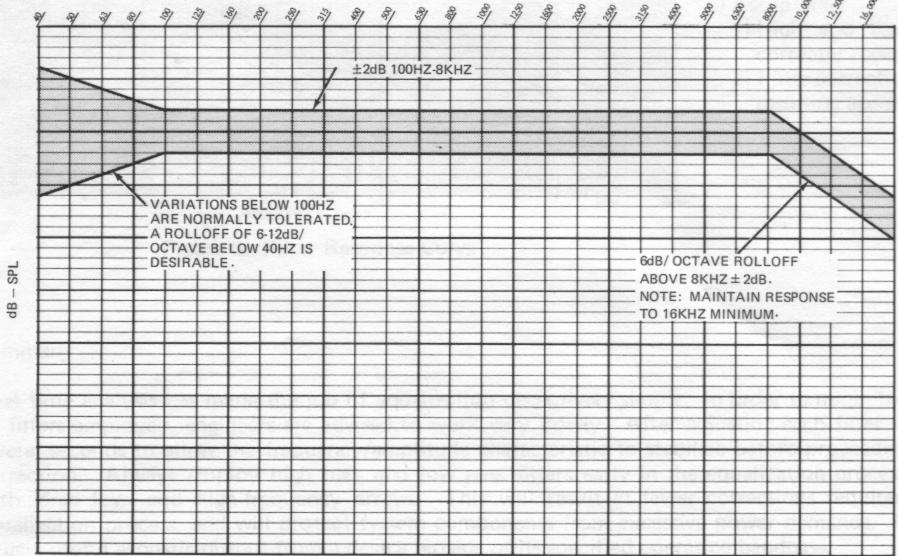| |
Using this test setup, the system is
equalized to a predetermined contour, with care being
taken to average several readings as previously
described. Once a system is so equalized, the engineer
is free to select microphones
that exhibit characteristics deemed desirable for the
installation. Systems that employ lavalier microphones
must be equalized in this manner. Feedback modes are
taken as previously described, and the system is talked to
determine acceptability. |
| |
|
|
|
|
|
|
|
|
|
|
|
| |
In all but
a handful of extraordinary cases, the present range of
components available should allow such equalization to
be performed with a minimum of electrical correction. |
| |
|
|
|
|
|
|
|
|
|
|
|
| |
Figure 6
shows two filter response curves for the same sound
systems. |
|
|
|
|
|
|
|
| |
|
|
|
|
|
|
|
|
|
|
|
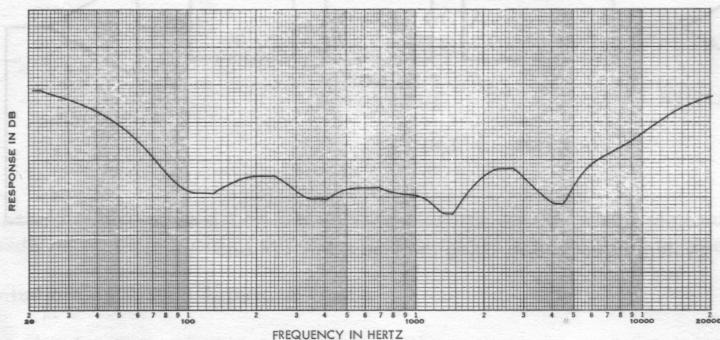 |
|
|
|
|
|
|
| |
a)
Unacceptable: |
|
|
| |
|
1)
Low-frequency boost causes power demands in excess of
available power. |
| |
|
2)
High-frequency boost results in excess noise (from
previous stages). |
| |
|
3) Filter
insertion excessive. |
|
| |
|
|
|
|
|
| |
|
|
|
|
|
|
|
|
|
|
|
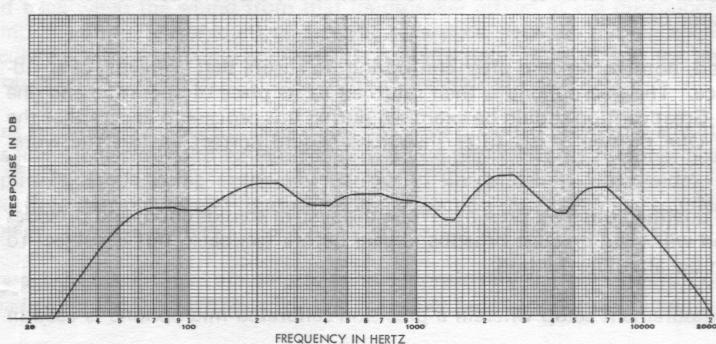 |
|
|
|
|
|
|
| |
b)
Acceptable: |
|
|
|
| |
|
1) High and
low frequencies correctly rolled off. |
| |
|
2) Filter
correction minimal for resulting acoustic response. |
| |
|
|
|
|
|
| |
|
|
|
|
|
|
|
|
|
|
|
| |
|
|
Figure
6. Filter Response Curve |
|
|
|
|
|
|
|
|
| |
|
|
|
|
|
|
|
|
|
|
|
| |
Summary
|
|
|
|
|
|
|
|
|
|
|
| |
|
|
|
|
|
|
|
|
|
|
|
| |
Real time
analysis has made the job of equalization deceptively
simple. In order to minimize the quantity of filters
employed, engineers are advised to work very slowly.
After adjusting each filter section, WAIT several
seconds to allow the frequency/amplitude characteristic
to stabilize before proceeding to the next correction.
Always employ high pass and low pass filters early in
the equalization process, particularly with large low-
and high-frequency arrays. This will result in fewer
corrections required later in the equalization process,
and will protect system components from excessive power
demands. Never attempt to gain useful
acoustic output from a device outside of its specified
operating bandpass. |
| |
|
|
|
|
|
|
|
|
|
|
|
| |
Above all,
perform equalization of sound systems only with the aid
of an experienced and qualified listener. Care exercised
in the equalization of sound systems will bountifully
reward the sound contractor. |

